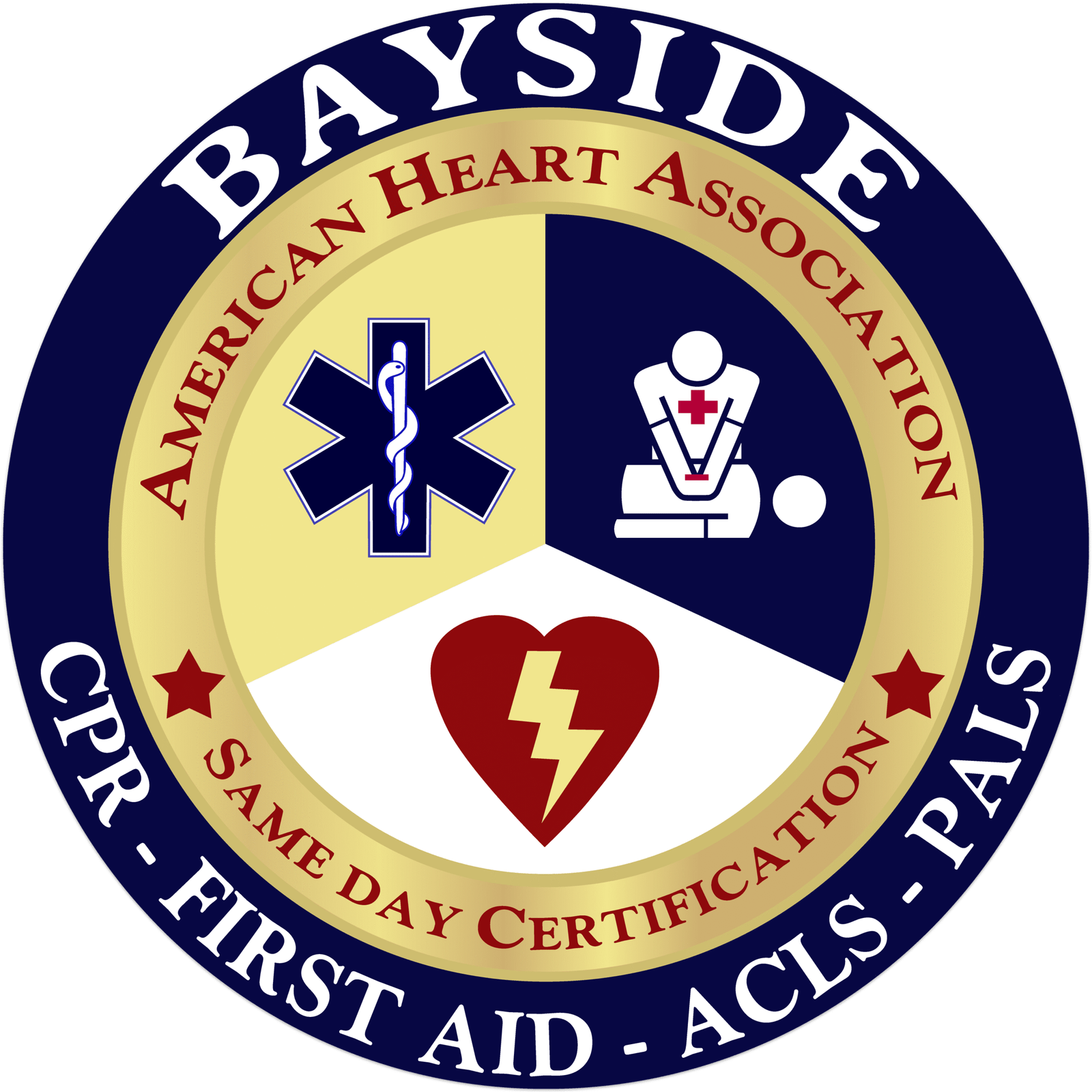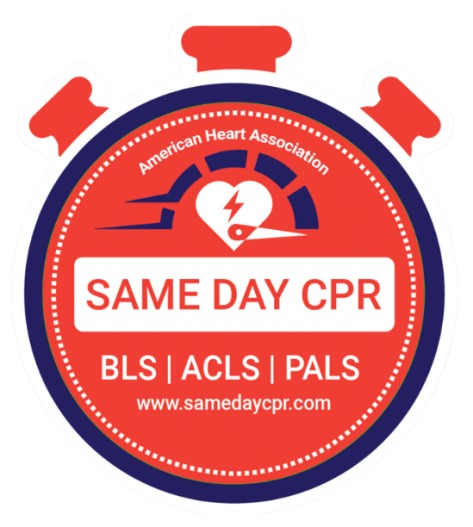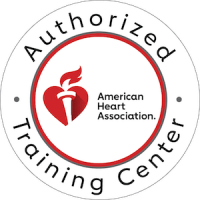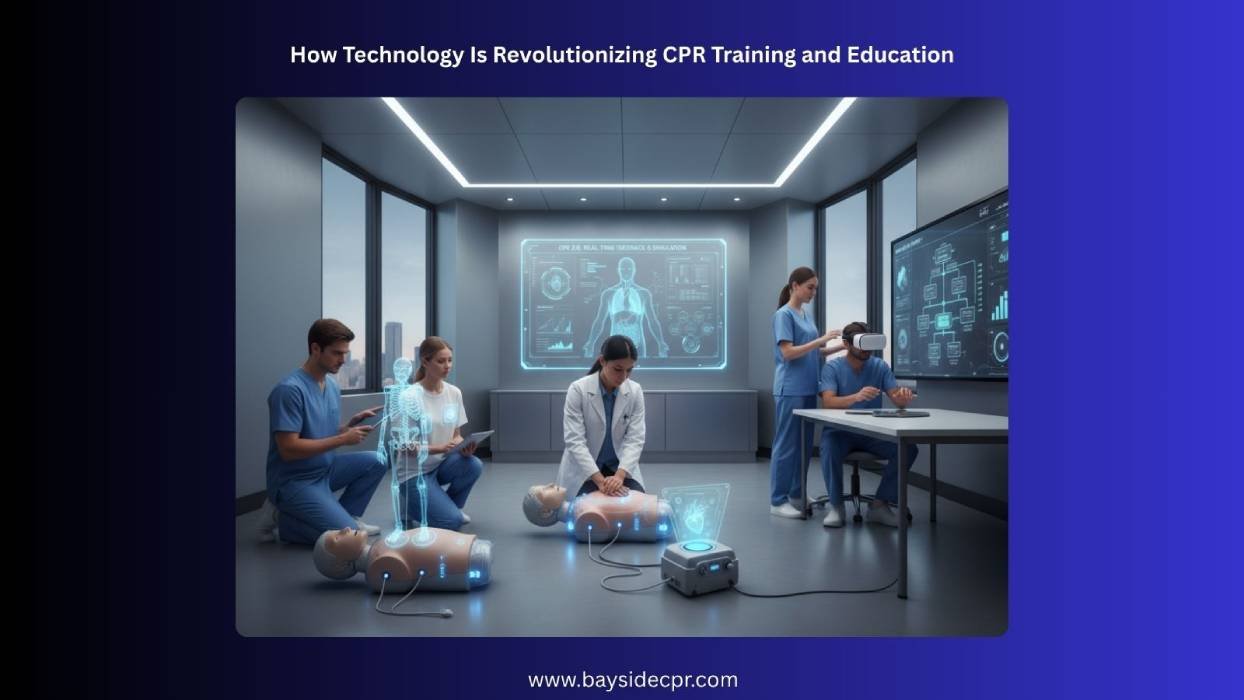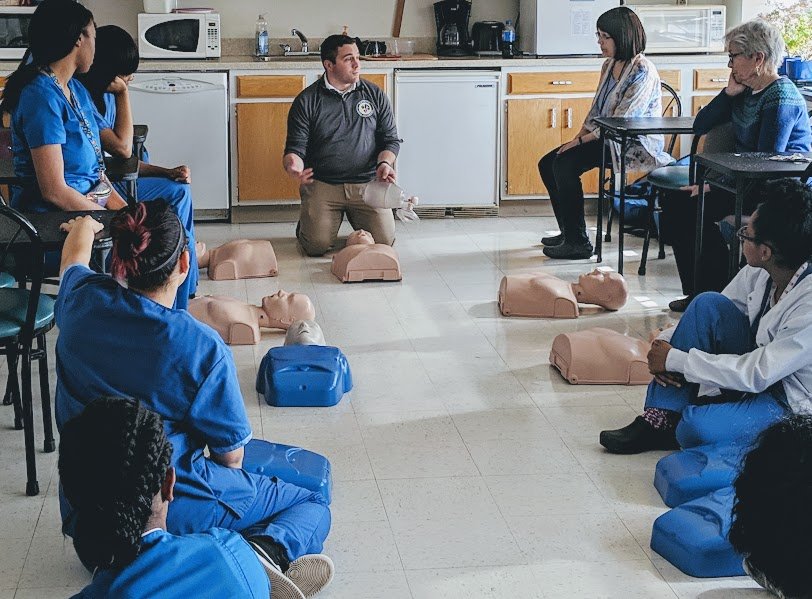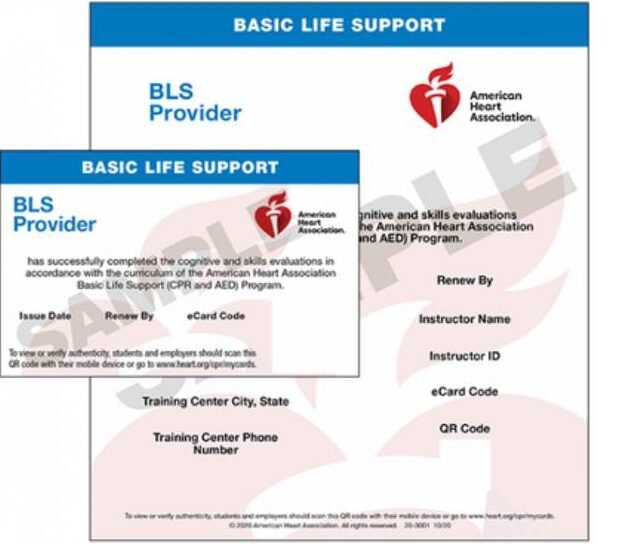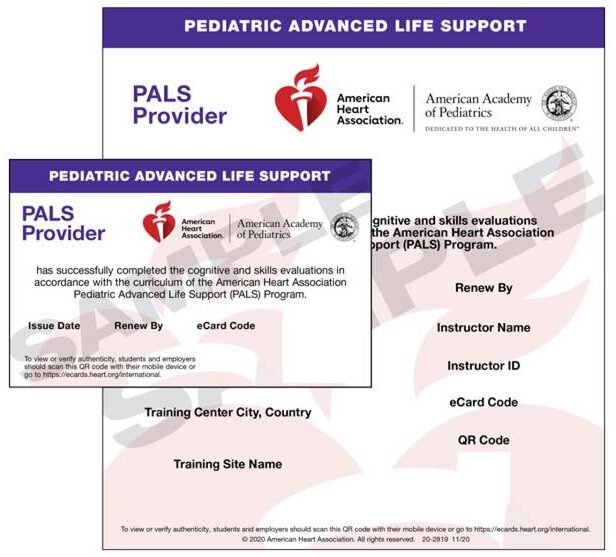CPR (cardiopulmonary resuscitation) can mean the difference between life and death, and knowing how to do it correctly is more important than ever. For years, people learned CPR through in-person classes, mannequins, and printed guides. While these methods worked, they often felt stressful or hard to practice enough to feel confident. Today, technology is changing the way we learn and teach CPR, making it more interactive, engaging, and easier to understand. From virtual simulations to smart feedback devices, learners can practice skills safely and get instant guidance. Instructors also have new tools to track progress and help students improve faster, creating a learning experience that is more effective and even a little fun.
Immersive and Realistic Simulations
Technology is changing the way people learn CPR, making training more hands-on and engaging. Students can practice life-saving skills in realistic scenarios that feel just like the real thing.
1. Virtual Reality (VR)
Virtual Reality simulates lifelike emergencies, allowing learners to feel immersed and accountable for their actions. This is typically achieved using interactive films or fully immersive 360-degree videos, where users perform CPR while head and body movements are tracked to provide real-time feedback.
Also, Read: What Does a Chest Compression Feedback Device Monitor During CPR?
2. Augmented Reality (AR)
Augmented Reality (AR) overlays digital information onto the real world, such as emphasizing anatomical structures or offering visual cues for correct techniques. It can be applied using AR glasses and hand gestures to position a virtual manikin or support remote learning systems.
Data-Driven Feedback Personalization
Smart systems give instant feedback, showing learners exactly what they did right or wrong. This personal guidance helps people improve their skills faster and feel more confident.
1. AI-Powered Stimulations
AI (artificial intelligence)-powered simulations bring CPR training to life realistically and interactively. Learners can practice different emergency scenarios that respond to their actions in real time. The AI provides instant guidance, pointing out mistakes and showing how to improve. This helps people build confidence and make decisions quickly under pressure. By practicing with AI, learners get a safe space to experiment, learn from errors, and refine their skills without the stress of a real emergency.
2. Sensor-Equipped Manikins
Sensor-equipped manikins give immediate, hands-on feedback during CPR practice. They measure compression depth, speed, and hand placement, showing exactly where improvements are needed. This helps learners adjust their technique and understand how small changes make a big difference. Practicing on a manikin that reacts realistically builds muscle memory and confidence. It turns abstract instructions into practical skills that stick, making learners ready to act when a real emergency happens.
Also, Read: How Can You Achieve a High Chest Compression Fraction?
3. Personalized Learning
Personalized learning adapts CPR training to fit each person’s needs. Systems track progress, highlight weak areas, and suggest exercises to strengthen skills. Learners can move at their own pace, focusing on what matters most to them. This tailored approach keeps motivation high and prevents frustration. By learning in a way that matches individual strengths and weaknesses, people gain confidence and mastery faster, turning training into a more effective and rewarding experience.
Increasing Accessibility Through Technology
Online tools and apps are bringing CPR training to more people than ever before. Learners can practice anytime, anywhere, without missing out on quality instruction.
1. Mobile Applications
Mobile applications have made learning CPR easier than ever. People can now access step-by-step guides, videos, and interactive tutorials right from their phones. This means anyone can practice at home, on a break, or while commuting. Apps also send reminders to refresh skills and track progress, turning CPR training into a habit instead of a one-time event. Learning no longer depends on finding a class or a trainer, which makes it more flexible and convenient for everyone.
2. Gamifications
Gamification makes CPR training fun and engaging. By turning lessons into challenges, quizzes, and scoring systems, learners stay motivated and focused. Users can compete with themselves or friends to improve accuracy and speed. This playful approach reduces stress and boosts confidence, helping people remember steps better. With games, CPR practice becomes less intimidating and more of an exciting way to learn skills that could save lives.
3. Community Forums
Community forums connect learners with others who share the same goal. People can ask questions, share experiences, and offer tips, creating a supportive learning environment. Beginners can gain confidence from hearing stories of others who have overcome similar challenges. Forums also allow trainers and professionals to provide advice, giving learners access to real-world knowledge. This sense of community keeps people motivated and makes CPR education feel less lonely and more collaborative.
Blended Learning Approach
Technology is changing how people learn CPR, making training easier and more effective. By combining online lessons with hands-on practice, learners gain skills they can trust in real emergencies.
1. Combining Physical & Digital Training
Blended learning brings the best of both worlds to CPR education. Learners can watch videos, take quizzes, and explore interactive lessons online, then practice hands-on skills with a manikin or in a class. This combination helps people understand concepts clearly and apply them confidently in real life. Digital tools make learning flexible and easy to fit into busy schedules, while in-person practice builds muscle memory and confidence. Together, they create a complete learning experience that feels practical, engaging, and effective.
Potential Drawbacks of Technology in CPR and Education
Technology can make learning CPR easier and faster for many people. But sometimes it brings challenges that can slow down training or create confusion.
- Risk of Technical Failure: Sometimes devices or apps can stop working at the wrong moment. This can make learning CPR frustrating and slow down practice.
- Cost and Access Issue: High-tech tools can be expensive for some people or schools. Not everyone can easily reach the equipment they need to learn.
- Increase Distractions: Screens and apps can pull attention away from hands-on practice. Learners might focus more on gadgets than real-life skills.
- Reduce Problem Solving Skills: Relying too much on technology can make learners wait for instructions. This can limit their ability to make quick decisions in emergencies.
- Privacy and Security Risk: Some learning apps collect personal data from users. If not protected, this information could be shared without permission.
The Future of CPR Training with Technology
The future of CPR training is exciting, with tools like haptic feedback gloves, AI-driven simulations, and virtual reality enhancing classroom and hands-on learning. Technology is making training more interactive, flexible, and effective, allowing learners to build real confidence and skills they can rely on in emergencies. By combining digital lessons with instant feedback and engaging experiences, more people around the world can access life-saving education and respond quickly when it matters most. While challenges like cost, distractions, or technical glitches exist, the benefits of personalized, immersive, and accessible training are clear. By embracing these tools and committing to regular practice, you can create a world where more people feel ready and confident to save lives.
